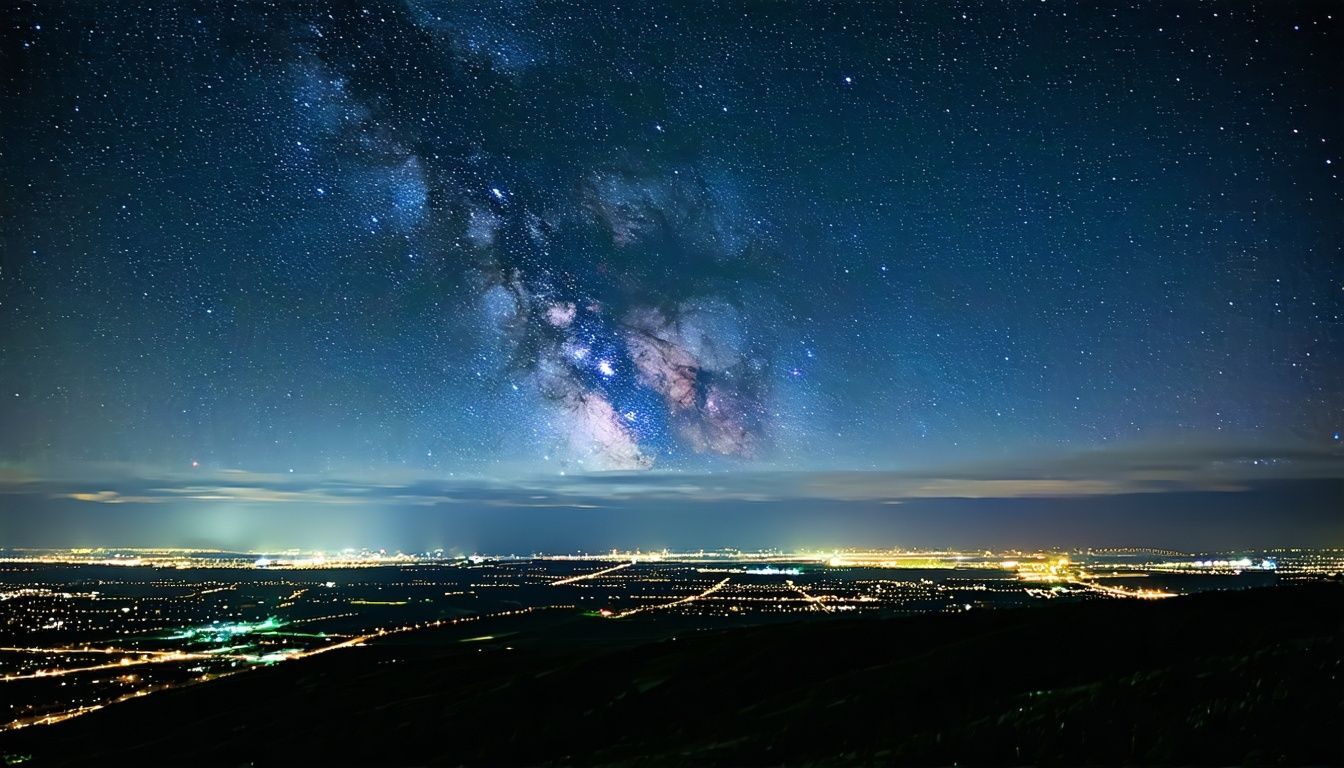

July 30th, 2025
3 min read

The Dark Side of Bright Lights: How Light Pollution Affects More Than You Think
You probably don’t think twice about flipping on your porch lights or admiring a glowing row of permanent holiday lights. But here’s one startling fact: more than 80% of the world’s population lives under light-polluted skies. And, unfortunately, for many species, that artificial glow can mean disorientation, disruption, and even death.
This isn’t just about stargazing. Light pollution is changing ecosystems, endangering wildlife, and adding to climate change through wasted energy. But the good news? You don’t have to give up beautiful outdoor lighting to make a difference. With the right choices, your home can shine responsibly. At Lux Lights, we believe lighting should enhance your space, not disrupt the world around it.
Let’s explore the hidden impacts of light pollution and how you can enjoy permanent lighting without harming the night.
Light pollution happens when artificial light, especially from homes, streetlights, and commercial buildings, spills out in excess or the wrong direction. It clouds the night sky, hides stars from view, and disrupts the natural rhythms of life.
There are four main types of light pollution:
When we install permanent lights without considering their brightness, placement, or timing, we unknowingly add to this growing problem.

At first glance, lighting up your home year-round may seem harmless, or even helpful. It adds beauty, increases safety, and helps deter crime. But without thoughtful design, it can create bigger issues than it solves.
Let’s take a closer look at how light pollution affects our environment.
Many animals depend on natural darkness to survive. Bats, fireflies, frogs, and migrating birds all rely on the night sky to feed, mate, and move safely.
When we flood their habitat with light, we throw their routines into chaos:
Permanent lighting, when not properly shielded or directed, can disrupt entire food chains. What starts as a porch light ends up affecting bats that can’t hunt, birds that can’t migrate, and plants that don’t get pollinated.
What You Can Do:
Use fully shielded fixtures that point light down, not out or up. And choose wildlife-friendly bulbs that emit warm, amber hues, which are far less disruptive to animals.
Every light you leave on burns energy. And when lights stay on all night, especially if they’re high-wattage or poorly placed, the cost adds up fast. Not just on your utility bill, but on the planet.
Wasted energy from lighting contributes to unnecessary carbon emissions, one of the biggest drivers of climate change. According to the International Dark-Sky Association, about 30% of outdoor lighting in the U.S. is wasted—that’s $3.3 billion and 21 million tons of CO₂ every year.
The Better Option:
Modern LED lighting uses up to 80% less energy than incandescent bulbs. Combine LEDs with smart timers, motion sensors, or dimmers, and your home becomes both efficient and eco-friendly.
We get it, outdoor lights look amazing. Permanent holiday lighting has become a popular way to boost curb appeal, show off your home, and celebrate year-round. And it’s not just aesthetics: good lighting makes homes safer and neighborhoods more inviting.
But beauty shouldn’t come at the cost of the environment.
Here’s the good news: You don’t have to choose between style and sustainability. The right lighting system offers both.
What to Look For:
You don’t need to be an expert or spend a fortune to make your home more light-friendly. A few simple changes can make a big difference.
Try these steps:
Want to go a step further? Support local ordinances that promote responsible outdoor lighting or advocate for “dark sky” protections in your city or town.
The goal isn’t to get rid of outdoor lights, it’s to use them smarter.
When installed with care, permanent lights can highlight your home beautifully without harming wildlife or wasting energy. It’s about making small shifts with big impact:

Light pollution might not seem as urgent as air or water pollution, but it’s one of the fastest-growing forms of environmental disruption. And unlike other issues, it’s surprisingly easy to fix.
With just a little attention, you can make your home part of the solution.
Love the glow. Lose the waste. Keep the stars.
Feeling inspired to light up your home responsibly?
Check out our guide on How Much Permanent Lights Really Cost and find a lighting system that fits your style and your values.
Content Manager at Lux Lights